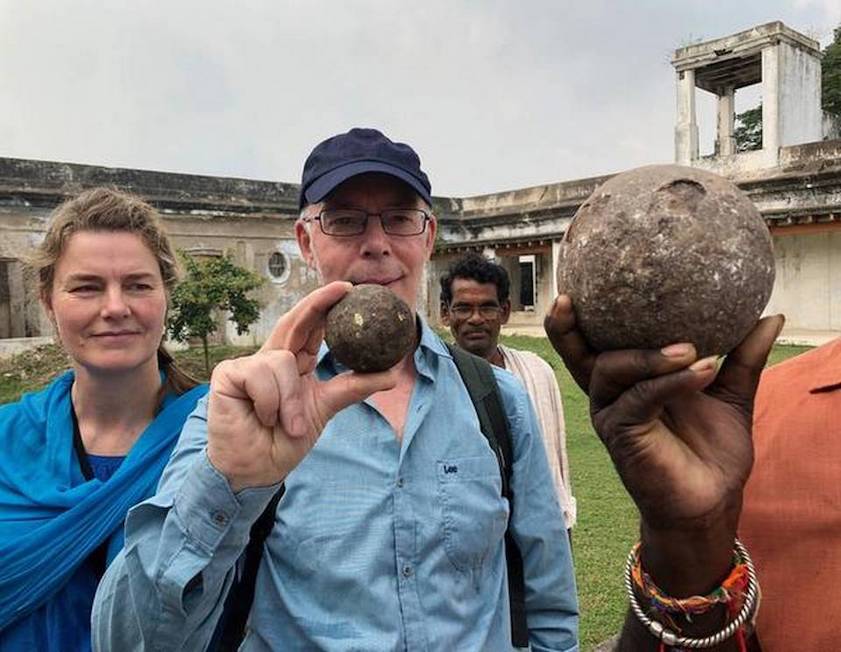Bandarkota
This is a collection of articles archived for the excellence of their content. |
Artefacts
2019/ cannonballs unearthed

Photo Credit: T. Appalanaidu
From: Appala Naidu Tippana, Bandar’s sure-shot connection with military history, February 18, 2019: The Hindu
Cannonball relics from a Dutch armoury unearthed in Machilipatnam turn treasures
Most people are highly possessive of artefacts unearthed in their backyard, but residents of Machilipatnam’s Bandarkota area treasure something unusual: cannonballs. These solid metal shots from a past era of warfare have been turning up periodically in housing sites in the old parts of the town when they are excavated for construction.
Many households preserve the cannonballs, although a few simply dispose of them as scrap, unaware of their heritage value. “Unearthing old, used cannonballs is common in our area. I have one, and it is an echo of military history,” says local resident P. Hanumath Rao.
Machilipatnam, in Andhra Pradesh, houses an old armoury dating back to the Dutch era, which is protected by the Archaeological Survey of India (ASI).
Famine and storm
Part of the structure collapsed in heavy rain in 2016. The fortunes of Bandarkota changed decisively after a storm in the 19th century. Tracing the history of the fort, the Manual of Kistna District by Gordon Mackenzie says: “The pestilence that followed on the famine of 1832-3 induced the authorities to station no more European troops at Bandar and the storm wave of 1864 caused the withdrawal of the last sepoy regiment and ended the history of Masulipatam as a military station.”
ASI monument assistant at the Dutch fort Subba Rao said his team had collected a cannonball from the local residents and put it on display.
A cannon was also kept on display at the entrance to the District Police grounds, after it was shifted from the railway station area.
“Until the 1960s, a cannon was operated by the local authorities without the use of cannonballs to avoid any untoward incident, producing just a deafening sound,” a local resident Mohammad Silar said.
Many families do not disclose their cannonball find, fearing that the ASI might recover them.